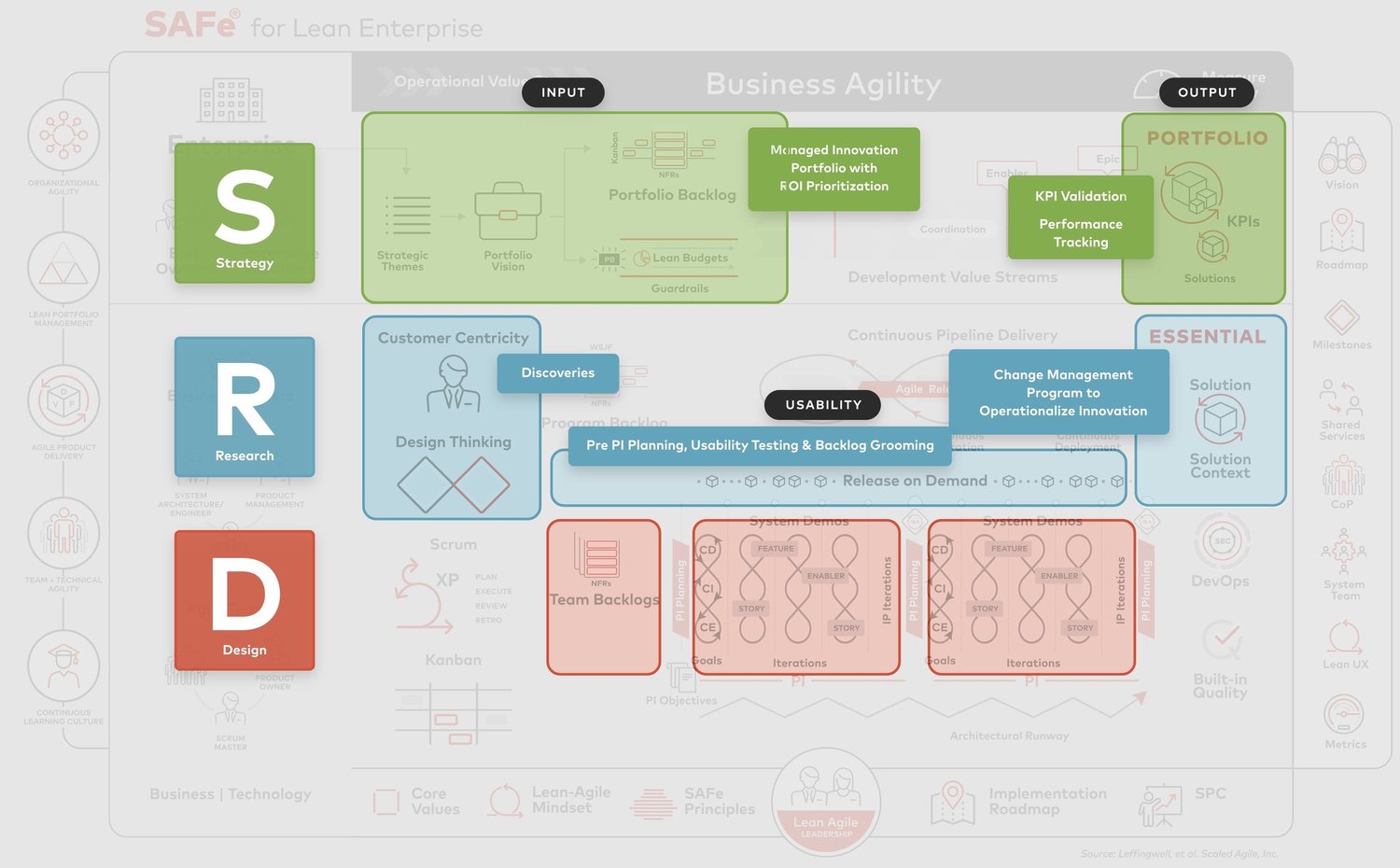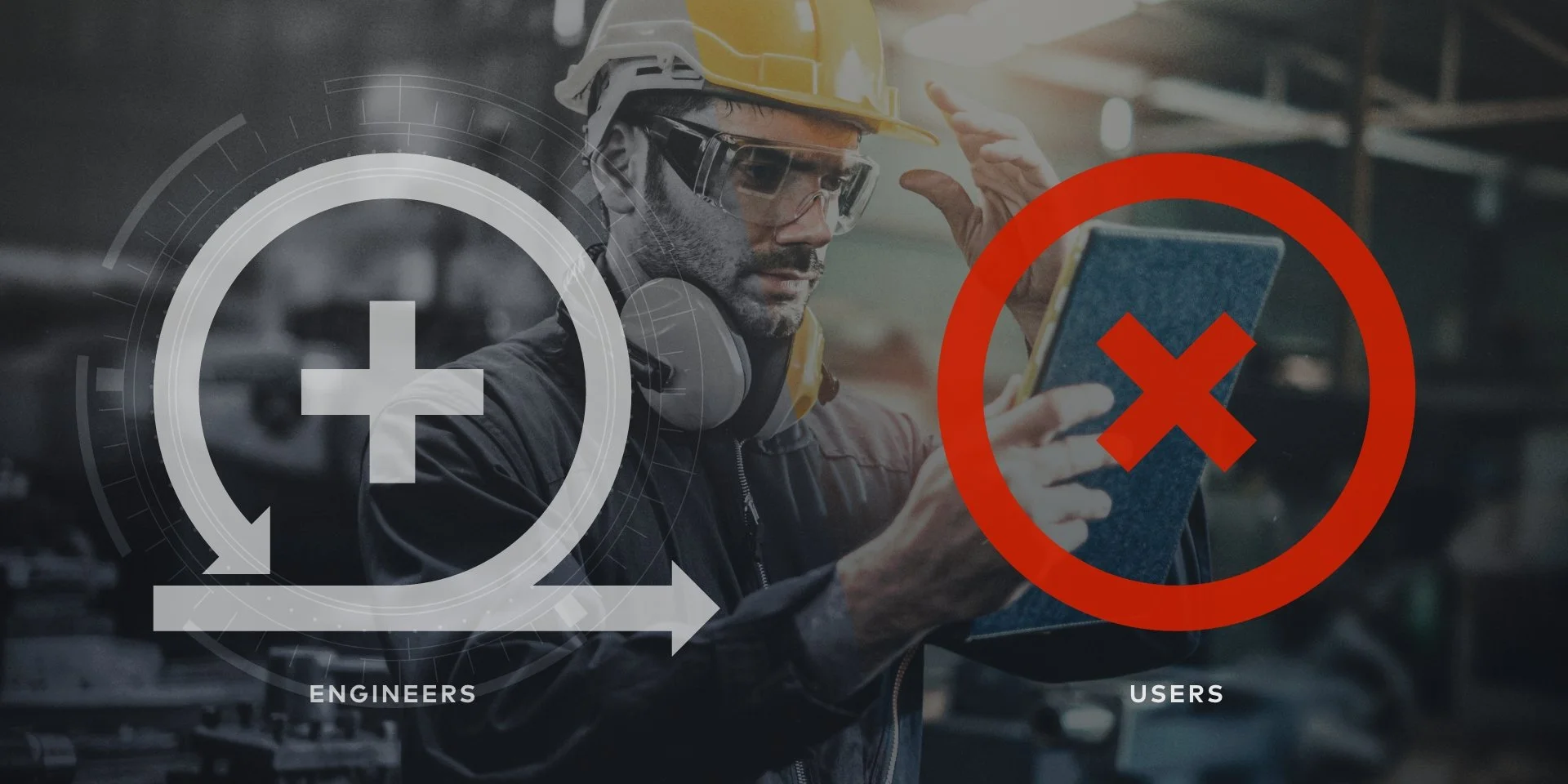SAFe for Engineers But Not SAFe for Users
UX is one of the smallest line items of an innovation budget but has an outsized impact on the application’s success and adoption. How does that reconcile with the Scaled Agile Framework for Enterprise, which minimizes the role of business-critical UX?
If you work in engineering, product or design at a large company, there’s a good chance you’ll know about SAFe. The Scaled Agile Framework for Enterprise is a workflow pattern that enables large organizations to leverage lean-agile principles in their software development, without requiring a total overhaul of their business structures. If you’re managing 10 different projects at 10 stages of construction with 10 different teams, priorities, budgets and timelines, for example, SAFe is an effective way to get everyone organized, aligned and handing off properly from concept to delivery.
For people who use SAFe, the idea that there’s anything wrong with it may be completely novel.
But spoiler alert: SAFe alone cannot guarantee successful project outcomes because it mostly ignores the human factors of design.
Where’s the user?
Source: Leffingwell, et al. © Scaled Agile, Inc.
A lot is going on inside the SAFe roadmap as the above graphic shows. There are roles (business owner, product, system architect, release train engineer etc), events (PI planning, sprint reviews), artifacts (features, stories) and more.
But where’s the user?
Let’s play Where’s Waldo and see if you can spot them.
The human part of the design – the voice of the user – is represented by the two diamonds in the center-left of the chart. You’d be forgiven for missing this icon because it takes up less than 2% of the overall process flow.
And the label doesn’t mention users: it refers to “customer centricity” and “design thinking.”
That’s intentional. As an Agile approach, SAFe is focused on fast-moving product delivery with minimal customer feedback interference, which has its own issues with bias, HIPPO (the highest paid person’s opinion prevails) and other well-documented problems. Design thinking is part of this philosophy since it allows a bunch of engineers to get into a room, put on their “customer” hats and brainstorm design ideas fast – often without ever speaking to a user.
Even the definition of “customer-centricity” is misleading. SAFe’s own guidance notes leave the door wide open to create personas of executive owners rather than focusing on the needs of the end-users who actually will use the software. As a result, the needs of end users – who determine if an innovation is adopted and whether the ROI of a project is realized – are often ignored in favor of what management wants.
In Daito’s world, innovation is not innovation unless it creates value for end-users. So it’s staggering that users warrant only one tiny icon on the SAFe chart – if they get mentioned at all.
Where’s the critical feedback loop?
Another problem with SAFe is it imposes a structure that locks designers out of the big picture (developing the strategy and the business case) as well as the delivery of the design (production and the continuous development experience). SAFe is intended to lean on Agile’s iterative approach. Right away we can see a split between the “thinking” and “doing” parts of a project so that teams can go off and do their own thing as little islands to minimize dependencies and speed up delivery.
In fact, there’s not even a specific role for UX designers in the agile team – they’re just part of a scrum or release train. The way SAFe sees it:
Enterprise strategists will create the business and technology case
The development team will then add a sprinkle of customer-centricity (whatever that means, since SAFe has co-opted the term to mean design thinking and nothing more)
Everything gets handed off to engineers for development, testing and iteration.
This approach disempowers UX designers and forces us to work solely within that green-diamond vacuum. The net result is a massive disconnect between the business case, the engineering teams, and the human factors of design, when really there should be a continuous feedback loop between the three.
How can we integrate UX into SAFe?
So far, we’ve described SAFe as looking a lot like an orchestra, filled with world-class musicians, all tuned up and sitting in their sections, expertly conducted, and playing the symphony of their lives – while completely ignoring the experience of the audience that paid good money to hear them.
Yet as every theater knows, the audience experience must come first if you want to get ticket sales and keep the theater open for business. The audience experience drives the business case.
The question for innovation leaders then, is how can we embed user-centered design deeper into the SAFe framework so enterprises get all the benefits of SAFe while centering everything around the user experience? How do we ensure that design is always one of the rails that engineering moves along?
The ideal methodology would have the design team coming in at various places, as the below graphic shows:

At a high strategic level
Sitting within the strategic themes/ portfolio vision part of SAFe, designers work alongside enterprise strategists to assess all of the different opportunities, put a value on them, and map them to what the company's program should be. For example, if your KPI is to save the company $10 million, will the design actually save that much money? How much money will it save? What elements of the design are likely to have the biggest impact? Aligning user research with the high-level business strategy ensures that everything is anchored to business outcomes from the start and the highest value actions are prioritized.
At the project level
Obviously, designers should lead the customer-centricity part of SAFe, where the design team will undertake true UX discovery (not design thinking!). Discovery is a deep and rigorous process that takes our team a minimum of 6-12 weeks. It includes site visits, work shadowing, observation, interviews, role assessments, time-on-task measurement, experience mapping, data collection, data synthesis, producing a research report, and holding a prioritization workshop with the customers so they can understand and internalize the research.
Then – and only then – can we visualize an initial concept design that slots into the SAFe program’s continuous delivery pipeline.
At the delivery level
Design should be embedded throughout the delivery pipeline to protect the voice of the customer and step in if the build starts skewing away from the human experience. At this point, we recommend that enterprises perform usability testing. This ensures that engineering is delivering the design and, more importantly, tests whether the concept is under- or over-performing against the original business KPIs and is thus delivering the right returns for the business.
SAFer for users, SAFer for the bottom line
In this improved SAFe model, design expands out of its double-diamond and acts as the connective tissue between the business, strategy and engineering groups. The result?
Your application will save time, reduce errors, improve performance against your various task measurements, or streamline processes in accordance with your KPIs, because you’ve collected the facts before and throughout the building of the business case.
You can prioritize the actions that give you the most value, because you have done the user-centered discovery work to figure out which feature set will get you the biggest return on your investment.
Your application will get funded. With UX creating the continuous feedback loop, you can finally make the connection between the financial opportunity for innovation and the realization of that opportunity, which is achieved by solving real, human problems. This connection is critical for the success of any enterprise-level product.
The SAFe methodology is a great way to manage lots of complex software development projects, but it’s not enough to ensure that the user experience is taken into account. Enterprises need to take a more holistic approach, putting design at the forefront in order to reap the rewards of a successful product. By placing designers at the strategic, project and delivery level, you can ensure that your products will be SAFer for your users – and your bottom line.


